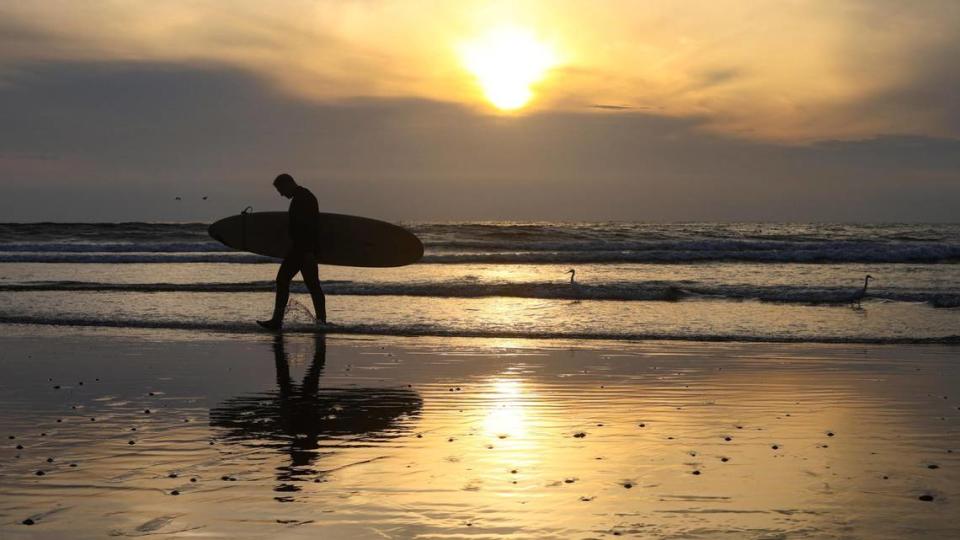Thousands of Pismo clams are surfacing on SLO County beaches. Here’s what we know
If you’ve walked along Pismo State Beach at low tide recently, you’ve probably had to watch your step in some areas.
Thousands of iconic Pismo clams have been surfacing on the sands over the past few months — stumping scientists and tripping up tourists.
“While we aren’t sure exactly what is causing this unusual behavior — or what has caused the recent population increase — we are exploring a few different explanations,” said Ben Ruttenberg, an associate professor and director of Cal Poly’s Center for Coastal Marine Sciences.
The clams began surfacing in large numbers on the beach in southern San Luis Obispo County earlier this fall.
Typically, the small bivalve shellfish remain buried beneath the sand where they’re protected from predatory birds.
Until recently, if the Pismo clams did surface on the beach, the numbers were so small they barely made a splash.

Ruttenberg is concerned for the safety of the clams while they lay out on the beach, along with scientists from the California Department of Fish and Wildlife (CDFW) and California State Parks.
However, those researchers say the thousands of shellfish that have surfaced on beaches may be a promising sign that the population could be rebounding.
The Pismo clam population has struggled to return to the numbers it reached in the early 1900s.
The last legally harvestable clam — measuring at least 4.5 inches — was found on the Central Coast in 1993, according to the CDFW.
The clams surfacing on the beach recently are still too small to harvest. Officials warn that illegal poaching can land you a hefty fine.
State Parks has recently renewed efforts to protect the clams from cars driving at Oceano Dunes State Vehicular Area. Signs in the popular park advise drivers to stay on the dry sand to avoid crushing the shellfish.

See a clam surfaced on the beach? Here’s how to rebury it
To help the Pismo clam population continue to grow and mature, the CDFW encourages anyone who finds surfaced Pismo clams on the beach to rebury them.
State Parks interpreter Danielle Bronson explained to The Tribune how to properly rebury Pismo clams to ensure they will survive.
According to Bronson, the first thing you do when you find a surfaced clam is to look for the clam’s hinge side, which is opposite the curved opening.
You’ll see a ligament, she said, that looks like a small, fleshy bump, on one side of the clam’s hinge.
Dig a small hole about two inches deep into the wet sand, as close to the ocean as you can get. If you’re comfortable standing in the surf to rebury the clam, that’s even better, Bronson said.
Place the clam in the hole you’ve dug with the hinge side facing toward the ocean and the ligament side up, she said. Then, cover it with sand.

